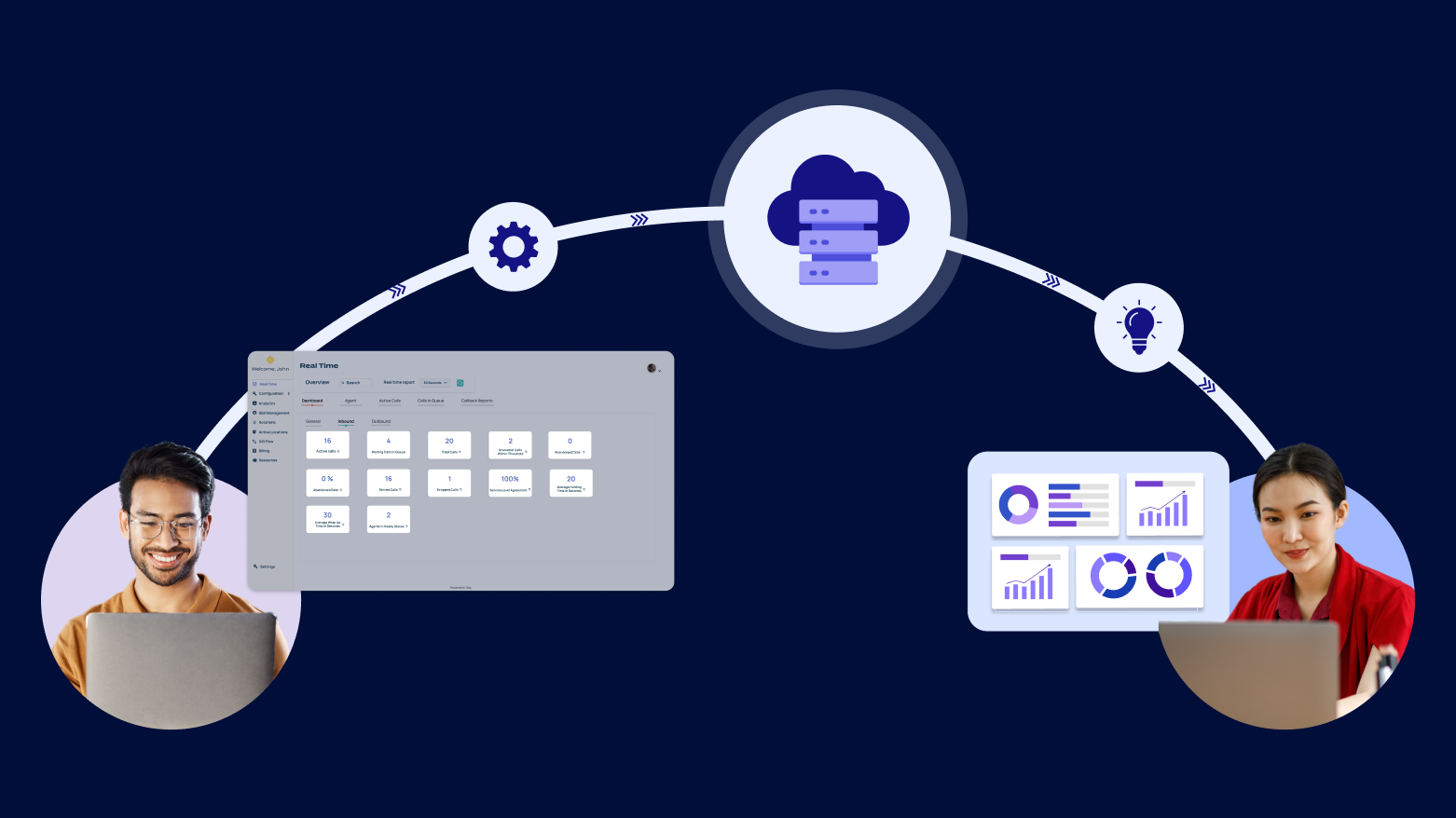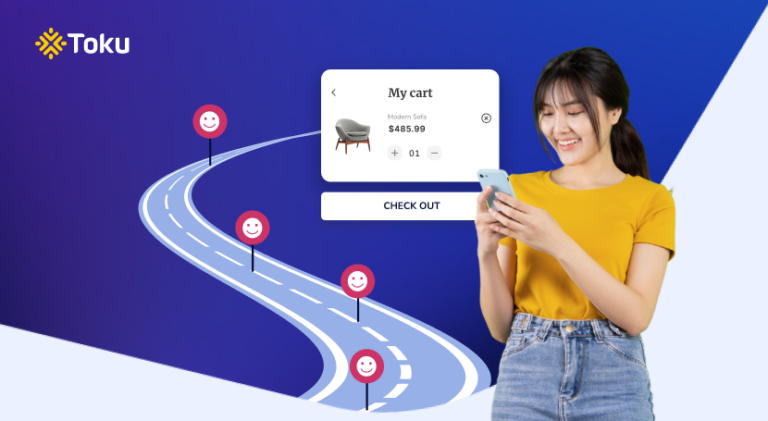SIP (Session Initiation Protocol) trunks are virtual phone lines that allow businesses to make and receive calls over the internet to anyone with a phone number. If you’re sitting on the fence on SIP, here are 5 benefits you should consider.
Running a modern contact centre has become a complex task.
Traditional ways of measuring success just don’t cut it anymore, especially when customer experience (CX) is now key to business growth. Contact centres have to manage tons of complicated data that come from different places.
In this article, we’ll explore why a comprehensive view of your entire CX, underpinned by a solution that fetches data from all parts of your operations — not just your contact centre — is essential.
With the help of a Reports API contact centre feature, integrating your analytics becomes easier. Contact centre managers and CX leaders are better placed to quickly grasp what is happening in their customer journeys and make swift, data-driven decisions that enhance service quality.
Go beyond measuring traditional metrics in contact centre reports
The default metrics in many contact centres—think call duration, first-call resolution, and average hold times—serve their own purposes but when viewed in isolation, they are inadequate.
For instance, a spike in call volume followed by a drop in the same, may indicate that a common product issue has been resolved. However, does the business actually know if the product has been fixed, and if this is what actually led to the lower call volume?
To answer this question, a contact centre manager would need to analyse the call data alongside relevant product data that would fill in the missing context.
A Reports API can fill this gap.
Let’s take a look at how this API works.
Bridging the gap with Reports APIs: How it works

Reports APIs enable you to pull data directly from your contact centre.
Once this data is fetched, it’s transferred to your data warehouse. From there, you have the flexibility to combine it with data from other business tools, setting the stage for deeper analysis.
This simplifies the process of integrating disparate data sets, offering a consolidated view for more actionable insights.
For most businesses, our Contact Centre Reports API will allow them the flexibility to fetch data from their contact centre in order to achieve more granularity when integrated with information from other business tools.
Practical scenario: Merging contact centre reporting data with product insights
To illustrate how integrating data from your contact centre and operations can be transformative, let’s look at the use-case of a Fintech app that’s recently rolled out a “One-Tap Transfer” feature.
With this feature, customers can transfer money between accounts more effortlessly.
Initial feedback looks promising, but soon, the contact centre starts receiving a growing number of calls and messages related to this feature. Users are confused about the verification steps involved in the process.
What happens next?
Traditional Approach: In a traditional setup, your contact centre might measure metrics like call volume, average hold time, and first-call resolution rates for these particular inquiries.
While these metrics tell you something is amiss, they don’t provide a nuanced understanding of the problem’s root cause.
With Reports APIs: You can now fetch the data you want from your contact centre and feed it into your data warehouse. Once collected, the business can combine the contact centre reporting metrics with actual user behavior data from the app. For instance, the fintech finds that 40% of users who initiate a “One-Tap Transfer” abandon the process at the verification stage.
The combined data reveals not only that users are calling about this feature but also that there’s a bottleneck at the verification step affecting user completion rates.
Strategic Impact: Armed with these insights, the business has a clearer understanding of both the problem’s scale and its specific point in the user journey.
Now, their CX leader and Product Manager can quickly collaborate to either simplify the verification process or develop in-app guides to help users navigate the feature better.
Customised insights for different stakeholders
Reports APIs usher in a new realm of data report customisation for various stakeholders in a contact centre.
For instance, once CX leaders analyse the combined data in their data warehouse, they might want to focus on extracting product usage data, then juxtapose it with contact centre reporting metrics like Customer Satisfaction (CSAT) or Customer Effort Score (CES) to identify patterns.
Typically, a CX leader may ask questions like:
- Do customers who use certain features have higher satisfaction rates?
- Does the frequency of a customer’s interaction with a particular product feature correlate with higher or lower CES?
These important insights can guide product development strategies and even marketing campaigns aimed at driving feature adoption for an elevated customer experience.
On the other hand, contact centre supervisors are often more entrenched in the granular metrics like Average Handle Time (AHT), First Call Resolution (FCR), and Occupancy Rate.
By analysing this data alongside product-specific information such as newly launched product feature issues, supervisors can conduct targeted agent training. This ensures that agents are not only efficient but also adept at resolving the most frequent customer challenges tied to specific product functionalities.
Bottom line: Each stakeholder now has greater control to customise the insights they need for their respective department’s requiremements.
360-degree view reports for complex global enterprise operations
In large enterprise companies operating across various markets, the challenges become exponentially more complex.
Indeed, handling diverse markets adds multiple layers of complexity—from varying customer service expectations and languages to different regulatory requirements.
Having a complete, 360-degree view of your data is essential to simplifying this complexity.
A Reports API can help fetch an expansive range of data beyond the usual capabilities of most contact centre solutions.
You can then tailor your analytics to each unique set of regional requirements, transforming what could be a tangled operational mess into a streamlined, efficient process.
Elevating CX with Reports APIs
In an age where data is critical to effective decision-making, Reports APIs are a gamechanger.
What we’ve noticed is that too many offerings limit the level of flexibility that contact centre managers need in extracting the data required to elevate their CX.
Why do people start calling?
Are there any recent product issues or updates causing customers to call?
These are just a few examples of the sort of product-centric questions a CX leader asks at a strategic level.
Therefore, when selecting a contact centre solution provider, consider not just the data the platform can generate, but also how it is going to allow you more flexibility in getting the relevant data for a 360-degree view of your whole operations.
 Girish Dharmaraj
Girish Dharmaraj 


 V K Sanjeed
V K Sanjeed 

 Nora Huin
Nora Huin